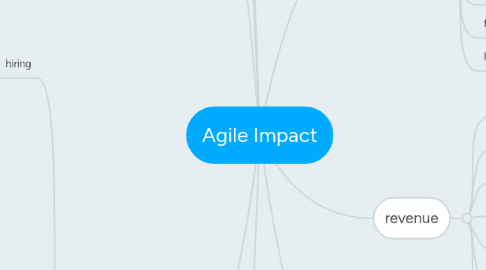
1. teams
1.1. dedicated team space
1.1.1. one per team
1.2. 7+-2
1.3. 3 dev, 2 QA, 1 UX, 2BA
1.4. visting SMEs
1.5. shared agile coach
1.6. pairing and mobbing
1.7. low WIP with One Piece Flow
1.8. farm teams
1.9. Happiness Gauge
2. revenue
2.1. seed funded
2.2. buying options
2.3. no budget
2.4. subscription based capacity selling
2.5. top line focus
2.6. funded shared services
2.7. Partial equity funding
2.8. Profit % model
3. customer relationships
3.1. working agreement
3.2. charters
3.3. customer on the team
3.4. product owner role
4. partner relationships
4.1. working agreements
5. cross-team coordination
5.1. syncing by MVP
5.2. seperating by module
5.3. identifying dependencies early
6. ideation
6.1. facilitated conversations
6.1.1. crucial conversations
6.1.2. examples
6.2. design thinking and action
6.2.1. prototyping
6.2.2. fast iterations
6.2.3. call and cull
6.3. validation
6.3.1. hypotheses based
6.3.2. soonest and shortest possible cycle time
7. building product
7.1. software engineeering
7.1.1. TDD
7.1.2. BDD
7.1.3. DevOps
7.1.4. pairing
7.1.5. staging
7.1.6. feature switch
7.1.7. refactoring to patterns
7.1.8. small steps
7.1.9. small programs only
7.1.10. SOLID
7.1.11. code for maintainability
7.1.12. split work by components
7.1.13. build thin slices iteratively
7.2. hardware engineering
7.2.1. modular components
7.2.2. goal based
7.2.3. simulate for speed
7.2.4. digital manufacturing for protoyping
8. people
8.1. hiring
8.1.1. integrity first
8.1.2. collaboration second
8.1.3. ability to learn third
8.1.4. skills
8.1.5. experience
8.1.6. who you know already
8.1.7. establishing thought leadership
8.1.8. listening
8.2. developing
8.2.1. apprenticehsihp model
8.2.2. regular training
8.2.3. Bench projects
8.2.4. training as you go
8.2.5. Guilds
8.3. full stack
8.3.1. groom towards this
8.4. dealing with geography and time
8.4.1. videoconferencing
8.4.2. align to time zones
8.5. intercultural
8.5.1. experiential training
8.5.2. language classes
8.5.3. culture classes instead of culture clashes
8.6. leadership
8.6.1. catalytic
8.6.2. being an example
8.6.3. set the bar high: vision
8.6.4. pruning out trouble
8.6.5. removing impediments
8.6.6. providing fertile ground, tools of the trade
8.6.7. mediation, dispute resolution, diplomacy
8.7. listening
8.8. forums
8.8.1. meetups
8.8.2. clinics
8.8.3. online forums
8.8.4. chats
